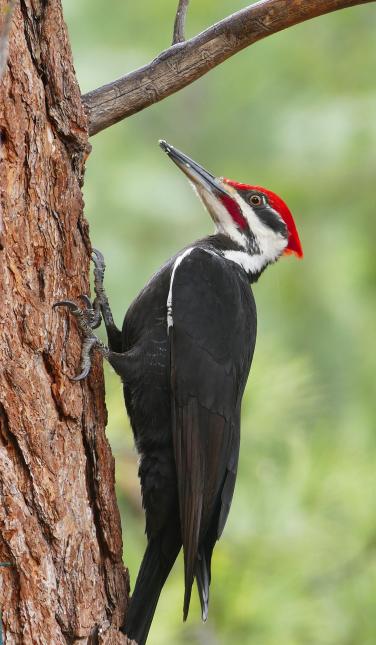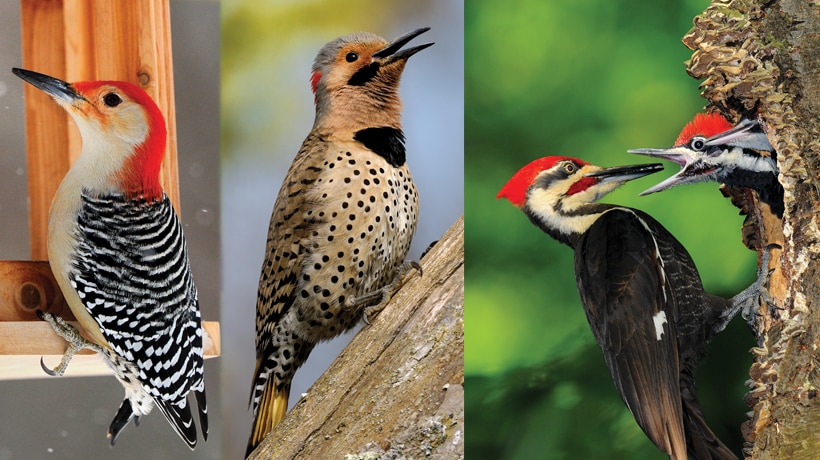Indigenous Woodpeckers in Florida: An Overview to Types and Behaviors
Indigenous Woodpeckers in Florida: An Overview to Types and Behaviors
Blog Article
Discover the Interesting World of Woodpeckers: Every Little Thing You Required to Know
The globe of woodpeckers is a realm filled up with unique habits, intricate adjustments, and a diverse variety of species. From their habitats and circulation patterns to their feeding practices and specialized physiological functions, woodpeckers have actually long captivated the rate of interest of ornithologists and nature enthusiasts alike.
Woodpecker Habitats and Distribution
Woodpeckers live in a varied range of atmospheres worldwide, showcasing flexibility in their circulation patterns. These resistant birds are found in forests, forests, savannas, and deserts throughout numerous continents, showing their ability to flourish in different climatic problems. In The United States and copyright, for instance, woodpeckers can be detected in both coniferous and deciduous woodlands, utilizing their strong beaks to forage for insects and create nesting cavities in trees. Likewise, in Africa, specific woodpecker types have adapted to arid atmospheres, such as the acacia forests, where they play a critical duty in regulating insect populaces.

Feeding Behaviors and Diet Plan
Woodpeckers utilize their solid beaks to pierce right into the bark of trees, probing for bugs and larvae hidden below the surface. In addition to pests, woodpeckers additionally eat nuts, seeds, fruits, and sap.
Woodpeckers are recognized for their drumming habits, which serves not only to communicate with other woodpeckers yet additionally to find food. The fast drumming noise is created by the bird pecking on powerful surface areas like dead trees or metal poles. This actions can bring in bugs hidden in Full Report the timber, permitting the woodpecker to find their existence and feed upon them.
Unique Adjustments for Tree Climbing
In their adept pursuit of bugs concealed within tree bark, woodpeckers have actually evolved exceptional physiological attributes that equip them with distinct adaptations for effective tree climbing. Woodpeckers have solid neck muscular tissues and an unique skull structure that absorb the effect of continuous pecking, permitting them to climb up up and down without creating injury to their brains. These adaptations showcase the incredible evolutionary design that allows woodpeckers description to navigate trees with precision and effectiveness.
Diverse Woodpecker Types Worldwide
With over 200 different types spread across different habitats worldwide, the household of Picidae encompasses an amazing diversity of woodpeckers. These birds can be discovered in forests, woodlands, savannas, and even city locations, showcasing their flexibility to various atmospheres. From the famous Northern Flicker in The United States And copyright to the vibrant and elusive Crimson-backed Flameback in Asia, each woodpecker species exhibits one-of-a-kind features in regards to quill, habits, and habitat choice.
Woodpeckers differ considerably in size, with the diminutive Downy Woodpecker measuring around 6-7 inches in size, while the effective Lineated Woodpecker can reach up to 17 inches - Woodpeckers in Florida. Their beaks additionally are available in different forms and dimensions, mirroring their feeding habits. Some types concentrate on removing insects from tree bark, like the Acorn additional resources Woodpecker, while others, such as the Black-cheeked Woodpecker, eat fruits and seeds

Conservation Initiatives and Obstacles
Conservation campaigns for woodpecker populations are vital in minimizing the impact of habitat loss and various other hazards facing these diverse avian types. Woodpeckers face different challenges to their survival, largely due to deforestation, urbanization, climate modification, and intrusive varieties. To resolve these issues, conservation efforts focus on safeguarding and bring back woodpecker habitats, carrying out lasting forestry techniques, and elevating recognition concerning the relevance of these birds in ecosystems.
One significant challenge in woodpecker conservation is the fragmentation of their environments, bring about separated populaces that are a lot more prone to termination - Woodpeckers in Florida. Guardians work to produce wildlife corridors and shielded locations that link these fragmented habitats, allowing woodpeckers to move in between various areas for feeding, breeding, and sanctuary

Conclusion
In final thought, woodpeckers are interesting birds with special adjustments for tree climbing and feeding behaviors. More research and conservation activities are required to make sure the survival of woodpeckers in the wild.
Report this page